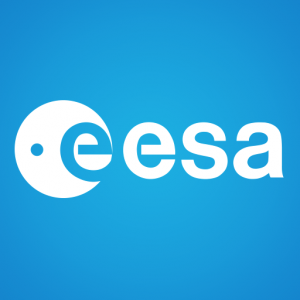
European Space Agency (ESA)
Agence spatiale européenne
Organismo Espacial Europeo
Search Open Yearbook
This information is part of the Open Yearbook, a free service of UIA's subscription-based Yearbook of International Organizations (YBIO). It includes profiles of non-profit organizations working worldwide in all fields of activity. The information contained in the profiles and search functionality of this free service are limited.
The full-featured Yearbook of International Organizations (YBIO) includes over 77,500 organization profiles, additional information in the profiles, sophisticated search functionality and data export. For more information about YBIO, please click here or contact us.
The UIA is a leading provider of information about international non-profit organizations. The aim of the Open Yearbook is to promote the activities of international non-governmental organizations (INGOs) and intergovernmental organizations (IGOs).
Contact Details
URL: http://www.esa.int/
Twitter: https://twitter.com/esa
Facebook: https://www.facebook.com/EuropeanSpaceAgency
LinkedIn: https://www.linkedin.com/company/european-space-agency/
Founded
1975-05-31
History
Available with paid subscription only.Aims
Shape the development of Europe's space capability and ensure that investment in space continues to deliver benefits to the citizens of Europe and the world.
Events
2026-10-27 | Maastricht, Netherlands – European Big Science Business Forum649 past events available with paid subscription only.
Activities
Available with paid subscription only.Structure
Available with paid subscription only.Languages
Available with paid subscription only.Staff
Available with paid subscription only.Finance
Available with paid subscription only.Relations with Inter-Governmental Organizations
Accredited to the Conference of the Parties of: E-XE3486 - Secretariat of the United Nations Convention to Combat Desertification (Secretariat of the UNCCD). Cooperation agreement with: B-XB1117 - International Maritime Organization (IMO). Accredited by: E-XK1561 - United Nations Framework Convention on Climate Change - Secretariat (UNFCCC). Cooperates with: E-XE0535 - Committee on the Peaceful Uses of Outer Space (COPUOS); E-XE2442 - European Commission (EC); F-XF0667 - European Parliament (EP); F-XD6538 - European Telecommunications Satellite Organization (EUTELSAT IGO); B-XB2622 - International Telecommunication Union (ITU); E-XE5547 - Joint Research Centre (JRC); E-XE7358 - Statistical Office of the European Union (Eurostat); B-XB3383 - UNESCO; E-XE3387 - United Nations Institute for Training and Research (UNITAR).
Relations with Non-Governmental Organizations
Observer to: E-XE2097 - European Umbrella Organization for Geographical Information (EUROGI). Cooperates with: E-XE1457 - Committee on Earth Observation Satellites (CEOS); U-XU2494 - Earth Observation International Coordination Working Group (EO-ICWG); E-XE4381 - Inter-Agency Space Debris Coordination Committee (IADC); U-XF2526 - Space Agency Forum (SAF); E-XE0314 - Strasbourg Astronomical Data Centre. Sponsors: F-XF3229 - International Space University (ISU). Founding member of: E-XM2800 - European Space Policy Institute (ESPI).
Member of:
- F-XM3484 - Alliance for Permanent Access;
- F-XF7154 - Asia-Pacific Regional Space Agency Forum (APRSAF);
- D-XM0413 - Association for Human Resources Management in International Organizations (AHRMIO);
- E-XE2108 - DVB Project;
- F-XF7127 - EIROforum;
- F-XD2644 - Eurisy;
- D-XD7924 - European Meteorological Society (EMS);
- D-XE5922 - European Telecommunications Standards Institute (ETSI);
- C-XJ6934 - International Committee on Technical Interchange for Space Mission Operations (SpaceOps);
- A-XA2054 - International Council for Film, Television and Audiovisual Communication (IFTC).
Associate member of: F-XJ4897 - GÉANT Association. Memorandum of Understanding with: D-XD0784 - Eurospace (ASD Eurospace); D-XD8844 - Global Satellite Operators Association (GSOA).
Publications
Available with paid subscription only.Members
Available with paid subscription only.Type I Classification
Available with paid subscription only.Type II Classification
Available with paid subscription only.Subjects *
UIA Org ID
XD0868
** UN SDGs are linked to the subject classification.
← return to your search page to find additional profiles.
UIA allows users to access and make use of the information contained in its Databases for the user’s internal use and evaluation purposes only. A user may not re-package, compile, re-distribute or re-use any or all of the UIA Databases or the data* contained therein without prior permission from the UIA.
Data from database resources may not be extracted or downloaded in bulk using automated scripts or other external software tools not provided within the database resources themselves. If your research project or use of a database resource will involve the extraction of large amounts of text or data from a database resource, please contact us for a customized solution.
UIA reserves the right to block access for abusive use of the Database.
* Data shall mean any data and information available in the Database including but not limited to: raw data, numbers, images, names and contact information, logos, text, keywords, and links.